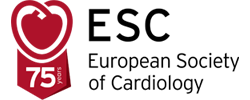The document was developed jointly by the European Society of Cardiology (ESC), the American College of Cardiology (ACC), the American Heart Association (AHA) and the World Heart Federation (WHF).
The first joint document in this area was the ESC/ACC criteria for redefinition of myocardial infarction, which was published in 2000. In 2007 the AHA and WHF joined the Task Force and a universal definition was developed.
The 2012 document sets out the levels of troponin required for a diagnosis of procedural related myocardial infarction after percutaneous coronary intervention (PCI), coronary bypass (CABG), other cardiac procedures, and non-cardiac procedures. Troponins are the primary biomarker for identifying if a myocardial infarction has occurred. “This is a controversial area because interventional cardiologists and surgeons do not want myocardial infarction as a complication,” said Professor Thygesen. “It means that they want to set the levels of troponin as high as possible. It was also difficult to reach a consensus because it’s impossible to conduct a clinical trial to find the answer.”
During the development of the third universal definition the Task Force communicated with the US Food and Drug Administration (FDA) and it is anticipated that this definition could be used as the basis for clinical trial protocols designed according to FDA regulations. Professor Thygesen said: “This is significant because it will help to standardize the way myocardial infarction is defined in clinical trials, making comparisons between trials more meaningful. Steering committees that write protocols for clinical trials do follow FDA requirements.”
Troponin levels can also be elevated in myocardial injury and cell death in conditions without overt myocardial ischaemia.
This new document contains a brand new section describing these situations to help clinicians and scientists understand how they differ from myocardial infarction. “This should help clinicians and scientists to make the correct diagnosis,” said Professor Thygesen.
The third universal definition will be published in five journals at about the same time: European Heart Journal on behalf of the ESC, the Journal of the American College of Cardiology for the ACC and Circulation for the AHA. For the first time it will also be published in the World Heart Federation’s Global Heart and Nature Reviews Cardiology.
The ESC is the driving force behind the Task Force, with support from the Committee for Clinical Practice Guidelines and the Practice Guidelines Department. The Task Force was the largest ever, with 52 members, and had a record number of countries involved including newcomers China and Russia.
Professor Thygesen said: “This is a truly global document that will be used worldwide. It will help doctors diagnose their patients so that they can provide the most appropriate treatment, and help researchers design clinical trials with standardized endpoints.”

 Our mission: To reduce the burden of cardiovascular disease.
Our mission: To reduce the burden of cardiovascular disease.